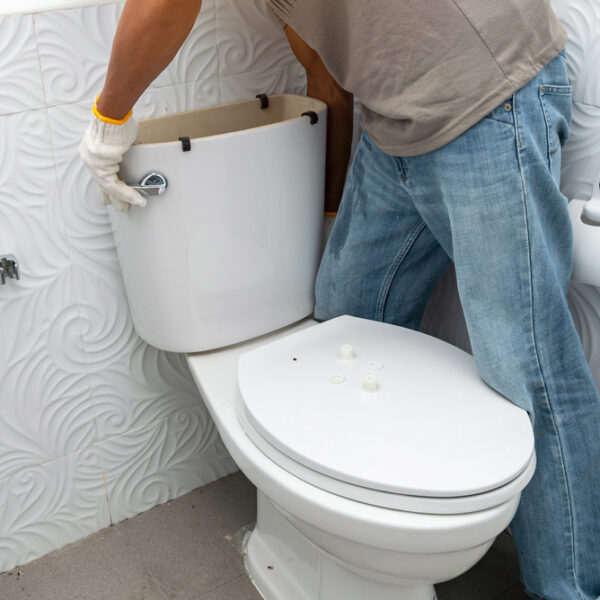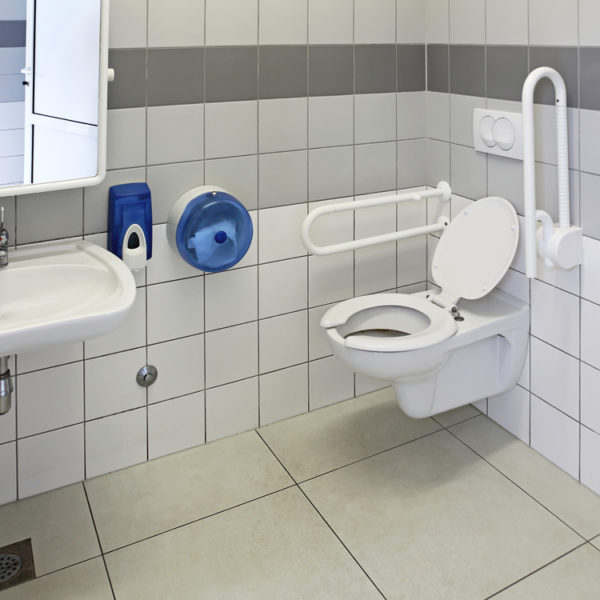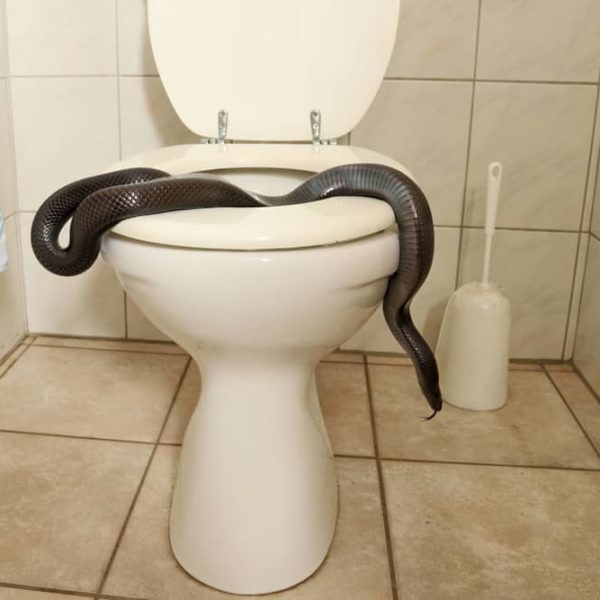Whether you plan to go camping for the weekend, take a long road trip, or want to live in your camper, toilet comfort is a serious matter. When comparing an RV toilet with a residential one, you will probably conclude the latter is undoubtedly more comfortable.
At first glance, both serve the same purpose, and it can be tempting to try installing a house toilet inside if you have enough room. The question is can you put a residential toilet in an RV and enjoy all benefits it provides? Let’s see whether it is a good idea.
Can You Put a Residential Toilet in an RV?
As you know, an RV is a mobile home, and you can consider the possibility of installing a comfy residential toilet instead a portable one. However, this model’s functioning in such conditions can be questionable.
The first step is to determine how both residential and RV-designed toilets work. Apart from being more sizable than RV toilets, home toilets are usually built from porcelain and include a water tank that is not heavily secured to the wall. Therefore, you can expect it to crack from turbulence while traveling.
When it comes to comfort, household toilets are far better. Unfortunately, an RV has limited space, and such a sizable unit can be impractical, particularly for tall and overweight people. Moreover, they include sizable water tanks that can spill out during the ride when failing to shut them tight correctly.
Things can be even worse when you purchase a smaller tank that requires often filling. Since such a model implies a limited dumping system, you should count on frequent cleaning and discharge.
To sum up, you shouldn’t install a residential toilet in an RV only because of seating comfort. The crucial disadvantages of this solution are:
- This toilet type is too heavy for the road
- It requires an entirely different plumbing system
- Most campers don’t have enough space for residential toilet installation
- Even though you install this toilet in your RV, you will need a professional maintenance
- It is an expensive solution for maintaining
The exception that proves the rule
The only case when installing a residential toilet won’t cause a problem is when you plan to live in a stationed camper for a long. Without regular movements, there is less possibility of breaking the toilet or spilling clean water and wastewater.
As you probably know, RV parks typically offer connections to the local sewer line. The best thing is that these sewer connections can also withstand the water from the residential-type toilet.
Residential vs. RV Toilets
Since installing a residential toilet in an RV is not an excellent idea in most cases, you should consider picking out a suitable RV toilet for your needs. Their design includes less water storage of approximately 40 gallons (150 l) per tank, on average.
A typical home toilet averages 3 to 6 gallons (11.4 – 22.7 l) per use, making it evident that this capacity is insufficient for a group of four or more people. Be aware that you also need water for showering, dishwashing, and even drinking if you own a filter. That makes this water amount very problematic in the long run.
Manufacturers partly solve that issue by allowing you to determine the water amount going out on a flush. Another option is installing compositing and portable toilets that save precious water.
RV Toilet Types
Nowadays, you can find different RV toilet types on the market. They function in different ways, and your choice will depend on numerous factors, including:
- Available space in your camper
- Your budget
The most common options you can choose from are:
1. Gravity flush toilet
This toilet type is the closest alternative to residential toilets you can find on the market. Therefore, you should consider this option instead of the standard toilet for your camper, particularly if you already have a black water tank system mounted outside the van.
The toilet bowl placed right above the tank relies on gravity. Water usage is surprisingly efficient inside the system because you can use a foot pump to determine how much water you want to release.
Pros
- It is an economic system with inexpensive and easy-to-replace parts
- There is no need for direct contact with waste
Cons
- It requires a dumping station
- The black water tank tends to clog up
2. Portable camping toilet
Since some RVs don’t come with an installed black water tank, this toilet type is the second best option you have at your disposal. It comes with an independent black water tank installed under the toilet.
Due to its size, you will need to discharge the content at least once in two days when used by more than one person. It is not a very fancy option, but it gets the job done. Additionally, you can take it outside the camper when needed, making it a practical choice.
Pros
- This toilet type works without a waste station necessity
- It is enough to bolt it down without complicated installation and remove it when needed
Cons
- This toilet has small storage, requiring often cleaning
3. Composting toilet
This toilet’s advantage is the possibility to split liquids from solids. Moreover, a practical solids compartment holds compositing agents that turn the waste into beneficial compost you can use as fertilizer later.
The liquid tank is smaller and requires regular emptying and cleaning, but it is far easier to manipulate than a typical black water tank. Plus, such separation minimizes the awful odor, making cleaning more pleasurable.
Pros
- This toilet works without water and doesn’t require a dumping station
- The fan is economical with low electric power needs
Cons
- This model requires frequent liquid waste removing
- It can be hard to clean when maintaining it inadequately
4. Cassette toilet
This toilet type is the least favorite option you can install, but it is still better than nothing. It is similar to the portable camping toilet but is fixed inside the RV.
It has a small waste storage unit accessible outside of the RV. Unfortunately, close contact with the waste while disposing of it makes this model pretty disgusting and impractical to manipulate.
Pros
- It requires low water usage and doesn’t need a dumping station
Cons
- This toilet has the smallest holding tank, and its emptying is unpleasant
Maintenance Differences
Residential toilet maintenance
If you still decide to go with the residential toilet installation in your RV, you should be prepared that this process is typically expensive and complicated. Even when you invest in such a solution because you enjoy its comfortability, the maintenance for this toilet type will be entirely different from the regular RV toilet.
The first thing to do is to make a new bathroom layout and organize a sewer system connected to the waste tanks. Be aware that finding a professional capable of finishing this task can be challenging.
You can do it yourself to save money, but previous plumbing experience is necessary for such a DIY project.
Always think in advance and provide all the necessary parts you need to change after a while. Since this toilet type is not suitable for this use, it will probably break down more often and require minor or major repairs in the long run.
RV toilet maintenance
- Black water tank
RV toilets typically come with a black water tank for residue storage, and you should empty it frequently. It is the only solution you have since a camper is not plugged into any external plumbing or sewer system.
Unfortunately, emptying the tank and throwing waste away is not the only job you need to finish. Thorough cleaning is crucial since inadequate maintenance leads to waste residue accumulation. That makes the toilet unbearable because of the stench and intensive bacterial growth.
Thankfully, keeping the black water tank clean is not too complicated. It will be enough to pour the required chemicals inside and let them sit inside for a while. Always follow the instructions for the particular product to achieve maximum effect.
Since RVs come with sensors, you will always know how full your tank is at any time. Most manufacturers recommend emptying when it is approximately 2/3 or 3/4 full.
Be aware that you will feel an unpleasant odor as soon as the content exceeds the recommended level. Remember that even chemicals can’t properly break down the waste when the tank is overfilled.
- Toilet seal
It is essential to ensure that the toilet seal at the bowl bottom is clean and greased. A regular plumber’s grease is good enough for this purpose, but it is vital to clean it regularly.
- Toilet bowl clogging prevention
One of the essential things is to check the toilet bowl when flushing. Many products, like toilet paper, feminine hygiene products, contraceptive products, diapers, and wet wipes, can cause severe problems when building up in the system.
Summary
An RV’s purpose is to provide the desired comfort while you are on the road, and the traditional residential toilet doesn’t fit particular circumstances. You can install it in your camper, but it is better to consult an RV professional before installing it.
It is vital to understand the advantages and downsides of such a decision and prevent inconvenience with waste disposal, tank cleaning, and probable failures.










